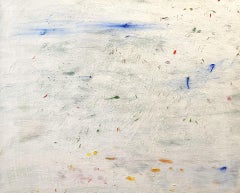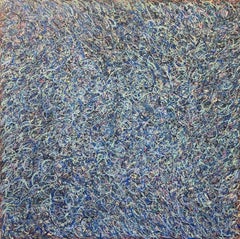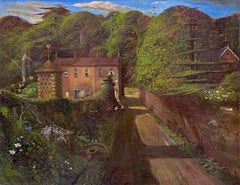Want more images or videos?
Request additional images or videos from the seller
1 of 6
Morris CoxEstuary1934
1934
$5,890.89List Price
About the Item
- Creator:Morris Cox (1903 - 1998, British)
- Creation Year:1934
- Dimensions:Height: 16.63 in (42.25 cm)Width: 13.38 in (33.99 cm)
- More Editions & Sizes:16.63 x 13.38Price: $5,891
- Medium:
- Period:
- Condition:
- Gallery Location:London, GB
- Reference Number:1stDibs: LU52415083802
About the Seller
5.0
Vetted Professional Seller
Every seller passes strict standards for authenticity and reliability
Established in 2007
1stDibs seller since 2014
82 sales on 1stDibs
Typical response time: 4 hours
Authenticity Guarantee
In the unlikely event there’s an issue with an item’s authenticity, contact us within 1 year for a full refund. DetailsMoney-Back Guarantee
If your item is not as described, is damaged in transit, or does not arrive, contact us within 7 days for a full refund. Details24-Hour Cancellation
You have a 24-hour grace period in which to reconsider your purchase, with no questions asked.Vetted Professional Sellers
Our world-class sellers must adhere to strict standards for service and quality, maintaining the integrity of our listings.Price-Match Guarantee
If you find that a seller listed the same item for a lower price elsewhere, we’ll match it.Trusted Global Delivery
Our best-in-class carrier network provides specialized shipping options worldwide, including custom delivery.You May Also Like
Georgian Contemporary Art by Giorgi Kavelashvili - Heart to Heart
Located in Paris, IDF
Acrylic and Tempera on wood panel
Giorgi Kavelashvili is a Georgian artist born in 1994 who lives and works in Tbilisi, Georgia. He is graduated from the Tbilisi State Academy of A...
Category
2010s Abstract Abstract Paintings
Materials
Acrylic, Tempera, Wood Panel
$5,000
H 57.09 in W 49.22 in D 1.38 in
Georgian Contemporary Art by Giorgi Kavelashvili - Expand
Located in Paris, IDF
Acrylic, tempera on wood panel
Giorgi Kavelashvili is a Georgian artist born in 1994 who lives and works in Tbilisi, Georgia. He is graduated from the Tbilisi State Academy of Arts,...
Category
2010s Abstract Abstract Paintings
Materials
Canvas, Acrylic, Tempera, Wood Panel
$4,300
H 43.31 in W 43.31 in D 1.78 in
Georgian Contemporary Art by Giorgi Kavelashvili - Sulmnati
Located in Paris, IDF
Acrylic,tempera,chameleon pigment,tinned Color,soft pastel on wood panel
Giorgi Kavelashvili is a Georgian artist born in 1994 who lives and works in Tbilisi, Georgia. He is graduat...
Category
2010s Abstract Abstract Paintings
Materials
Acrylic, Pastel, Tempera, Wood Panel, Pigment
$4,300
H 38.19 in W 38.19 in D 0.79 in
The Three Emperors, Futuristic painting triptych as a Byōbu-ē folding screen
By Konstantinos Papamichalopoulos
Located in Dallas, TX
The Three Emperors is a triptych, which Papamichalopoulos has created a Byōbu-ē folding screen. Each panel measures 150x40 cm / 59 x 16 inches.
The piece is created using ink, egg-...
Category
2010s Contemporary Figurative Paintings
Materials
Gold Leaf
$10,000 Sale Price
20% Off
H 59.06 in W 47.25 in D 1.19 in
American Abstract Contemporary Art by Paul Lorenz - January 01, No. 2
By Paul Lorenz
Located in Paris, IDF
Oil, casein & ink on panel
Paul Lorenz is an American artist born in 1961 who lives & works in Buckeye, AZ, USA. With an education in Bauhaus architecture, fine art, and music compo...
Category
2010s Abstract Abstract Paintings
Materials
Ink, Oil, Casein, Panel
$2,600
H 11 in W 14 in D 1.2 in
American Abstract Contemporary Art by Paul Lorenz - January 02, No. 1
By Paul Lorenz
Located in Paris, IDF
Oil, casein & ink on panel
Paul Lorenz is an American artist born in 1961 who lives & works in Buckeye, AZ, USA. With an education in Bauhaus architecture, fine art, and music compo...
Category
2010s Abstract Abstract Paintings
Materials
Ink, Oil, Casein, Panel
$2,600
H 11 in W 14 in D 1.2 in
American Abstract Contemporary Art by Paul Lorenz - January 01, No. 3
By Paul Lorenz
Located in Paris, IDF
Oil, casein & ink on panel
Paul Lorenz is an American artist born in 1961 who lives & works in Buckeye, AZ, USA. With an education in Bauhaus architecture, fine art, and music compo...
Category
2010s Abstract Abstract Paintings
Materials
Ink, Oil, Casein, Panel
$2,600
H 11 in W 14 in D 1.2 in
American Abstract Contemporary Art by Paul Lorenz - January 09, No. 4
By Paul Lorenz
Located in Paris, IDF
Oil, casein & ink on panel
Paul Lorenz is an American artist born in 1961 who lives & works in Buckeye, AZ, USA. With an education in Bauhaus architecture, fine art, and music compo...
Category
2010s Abstract Abstract Paintings
Materials
Ink, Oil, Casein, Panel
$2,600
H 11 in W 14 in D 1.2 in
American Abstract Contemporary Art by Paul Lorenz - January 30, No. 4
By Paul Lorenz
Located in Paris, IDF
Oil, casein & ink on panel
Paul Lorenz is an American artist born in 1961 who lives & works in Buckeye, AZ, USA. With an education in Bauhaus architecture, fine art, and music compo...
Category
2010s Abstract Abstract Paintings
Materials
Ink, Oil, Casein, Panel
$2,600
H 11 in W 14 in D 1.2 in
American Abstract Contemporary Art by Paul Lorenz - January 09, No. 3
By Paul Lorenz
Located in Paris, IDF
Oil, casein & ink on panel
Paul Lorenz is an American artist born in 1961 who lives & works in Buckeye, AZ, USA. With an education in Bauhaus architecture, fine art, and music compo...
Category
2010s Abstract Abstract Paintings
Materials
Ink, Oil, Casein, Panel
$2,600
H 11 in W 14 in D 1.2 in
More From This Seller
View AllBeneath Their Lies, Contemporary British Abstract Oil Painting
Located in London, GB
Oil on canvas
Image size: 29 x 24 inches (73.5 x 62 cm)
Framed
Category
2010s Contemporary Abstract Paintings
Materials
Canvas, Oil
Nebula, British Contemporary Artist Abstract Oil Painting
Located in London, GB
Oil on canvas
Image size: 15 3/4 x 19 1/2 inches (40 x 49.5 cm)
Framed
Category
2010s Contemporary Abstract Paintings
Materials
Canvas, Oil
The Pale Green Gavotte, 20th Century
Located in London, GB
Oil on canvas
Image size: 35 3/4 x 35 3/4 inches (91 x 91 cm)
Entitled, monogrammed, dated 'November 1974' and inscribed on reverse
Category
1970s Abstract Paintings
Materials
Canvas, Oil
Fennys Lane
Located in London, GB
John Shelley
Fennys Lane
1938-2020
Oil on board, signed and dated '1968' on verso
Image Size: 35 1/2 x 27 1/2 inches (90 x 69.8 cm)
Original frame
Provenance
The artist, whom exhibi...
Category
21st Century and Contemporary Post-War Abstract Paintings
Materials
Oil, Board
Portrait of Philip Melanchthon
By German School
Located in London, GB
German School
17th Century
Portrait of Philip Melanchthon
Oil on panel
Image size: 9 x 12 inches (22.6 x 30.3 cm)
This charming portrait depicts Philip Melanchthon, the acclaimed Lu...
Category
17th Century Portrait Paintings
Materials
Oil, Wood Panel
Christ as a Boy
Located in London, GB
Attributed to Francesco Bonsignori
Italian 1455-1519
Christ as a Boy
Oil on wood panel
Image size: 12 1/4 x 16 inches (31 x 40.5 cm)
Original gilt frame
In this painting on panel, ...
Category
16th Century Italian School Portrait Paintings
Materials
Oil, Wood Panel


